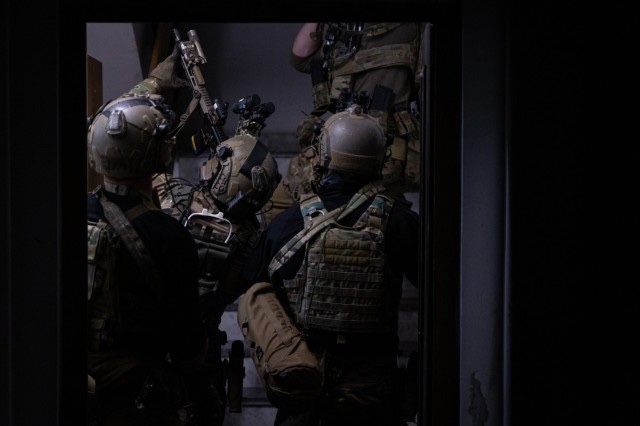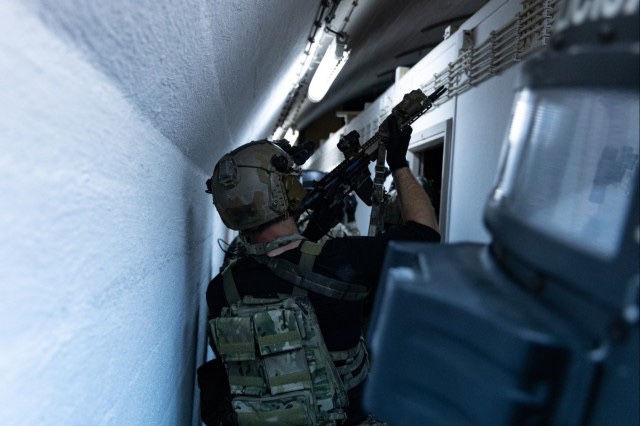
SARAJEVO, Bosnia-Herzegovina — Forty miles southwest of Sarajevo, enemies are holed up in an underground government facility built inside a mountain during the Cold War to protect a former Yugoslav president against nuclear attack.

From a Sarajevo compound, U.S. Army Green Berets assigned to the Critical Threats Advisory Company, or CTAC, take off to raid the 70,000-square-foot protective bunker alongside Bosnia-Herzegovina State Investigation and Protection Agency, known as SIPA, officials May 8, 2023.

Three nondescript houses disguise each entrance to the facility. Through the houses and inside the labyrinthine structure, intermittent volleys of gunfire with the enemy reverberate through tunnel corridors. Room by room, the combined force of assaulters systematically clear the protective bunker.

This raid was the culmination exercise of a six-week-long joint combined exchange training focused on close-quarters battle and small unit tactics.

“It was a time-sensitive target, so the planning cycle was condensed,” said the troop leader assigned to CTAC, 10th Special Forces Group (Airborne) — a highly lethal force capable of collaborating with elite special operations forces elements worldwide. “The bunker has small hallways and small rooms … I wanted to raid the bunker to see how the team would react; to see how I would command and control.”

The 100-room structure was selected as a target to test the force’s methods due to its complexity and extensive size.

Providing solutions for the most sensitive problems and succeeding is paramount, said the special support unit executive officer, a SIPA official with over thirty years of police experience. The mission’s challenging location, time constraints and finite resources presented a nightmare scenario that compelled partners to combine efforts, overcome adversity and get results.

The mission succeeded, shortfalls and gaps were identified, and both sides provided recommendations for future reference, said the special support unit executive officer. Experience and lessons learned from the CTAC are valuable resources that will align the special support unit in solving complex problems.

“I do truly believe that the systems were tested that day,” said the CTAC troop leader. “We definitely learned lessons working with a new partner force which is key in refining troop standards. It’s the Green Beret way.”

By SSG Anthony Bryant


Why doesn’t our troops use ballistic shields in these scenarios?
They do.
I’ve seen convention units use them when training on SUBT.
I believe I’ve seen Rangers and AWG use a mix of shields and rolling shield dollys for this kind of thing.
I am glad to hear that.